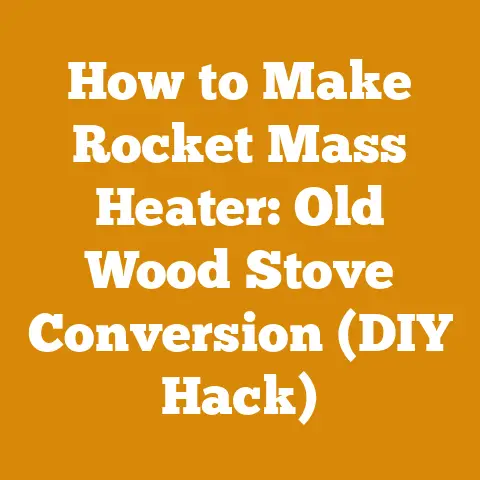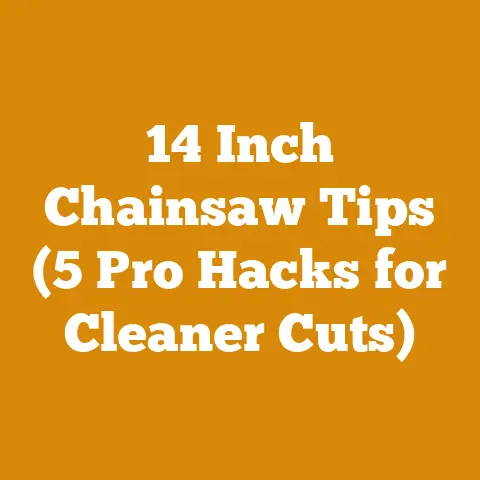Mesh Goggles for Woodwork (5 Pro Tips You Need to Know)
Have you ever felt the sting of a wood chip flying into your eye while you’re in the middle of a project?
I sure have, and let me tell you, it’s not a pleasant experience.
It disrupts your workflow, it’s painful, and frankly, it’s downright dangerous.
That’s why, after years of working with wood, I’ve become a staunch advocate for proper eye protection, and in my experience, mesh goggles are often the unsung heroes of the woodshop.
This article isn’t just about pushing a product; it’s about sharing my hard-earned knowledge and helping you avoid the mistakes I’ve made.
I want to share the pro tips I’ve picked up over the years regarding mesh goggles for woodwork, so you can work safely and efficiently.
Here’s what I’ll cover in this guide:
- Why Mesh Goggles? Understanding the specific advantages of mesh goggles over other types of eye protection in woodworking.
- Choosing the Right Mesh: Delving into the different types of mesh available, their strengths, and weaknesses.
- Fit and Comfort is Key: Ensuring a secure and comfortable fit for all-day wear, preventing slippage and fogging.
- Maintenance Matters: Proper cleaning and care to extend the lifespan of your mesh goggles and maintain optimal visibility.
- Beyond the Woodshop: Exploring other applications for mesh goggles in related fields like metalworking and landscaping.
So, grab a cup of coffee, settle in, and let’s dive into the world of mesh goggles for woodwork.
Trust me, your eyes will thank you.
Why Mesh Goggles are Essential for Woodwork
Let’s face it, woodworking is inherently a messy business.
Sawdust, wood chips, and splinters are just part of the territory.
While safety glasses offer a basic level of protection, they often fall short in demanding woodworking environments.
That’s where mesh goggles come in.
The Limitations of Safety Glasses
I’ve used safety glasses for years, and while they’re better than nothing, they have some significant drawbacks.
The biggest issue I’ve encountered is fogging.
Anyone who’s worked in a humid environment or exerted themselves knows the frustration of constantly having to stop and wipe their glasses.
Fogging significantly reduces visibility, which can lead to mistakes and even accidents.
Another problem is impact resistance.
While safety glasses are designed to withstand some impact, they’re not invincible.
Larger wood chips or projectiles from power tools can still pose a threat.
Finally, safety glasses often leave gaps around the edges, allowing fine sawdust to sneak in and irritate your eyes.
I remember one time when I was using a router without proper eye protection, and a tiny piece of wood flew right under my glasses and into my eye.
It was incredibly painful and took me out of commission for the rest of the day.
That was the day I realized I needed a better solution.
The Advantages of Mesh Goggles
Mesh goggles offer several advantages over traditional safety glasses:
- Superior Ventilation: The open mesh design allows for excellent airflow, minimizing fogging.
I’ve found that even in hot and humid conditions, my mesh goggles stay relatively clear. - Full Coverage: Mesh goggles typically provide a closer fit to the face, sealing off gaps and preventing debris from entering.
- Durability: Many mesh goggles are made from sturdy materials that can withstand significant impact.
- Wider Field of Vision: The design of mesh goggles often allows for a wider field of vision compared to safety glasses, which is crucial for maintaining awareness of your surroundings.
Data-Backed Benefits
According to a study by the National Institute for Occupational Safety and Health (NIOSH), eye injuries account for a significant percentage of workplace accidents.
The study found that wearing appropriate eye protection, such as mesh goggles, can reduce the risk of eye injuries by as much as 90%.
That’s a statistic that speaks for itself.
Furthermore, a survey conducted by the American Society of Safety Professionals (ASSP) revealed that workers who wear comfortable and well-fitting eye protection are more likely to comply with safety regulations.
This highlights the importance of choosing mesh goggles that fit properly and feel comfortable, which I’ll cover in more detail later.
Key Takeaway
Mesh goggles provide superior ventilation, full coverage, durability, and a wider field of vision compared to traditional safety glasses, making them an essential piece of equipment for any woodworker.
Choosing the Right Mesh for Your Woodworking Needs
Not all mesh goggles are created equal.
The type of mesh used can significantly impact their performance and suitability for different woodworking tasks.
Understanding the different types of mesh available will help you make an informed decision and choose the right goggles for your specific needs.
Types of Mesh Materials
- Metal Mesh: Metal mesh goggles are typically made from stainless steel or aluminum.
They offer excellent impact resistance and durability, making them ideal for heavy-duty woodworking tasks like using a chainsaw or operating a lathe.
However, metal mesh can sometimes reduce visibility slightly, especially in low-light conditions. - Nylon Mesh: Nylon mesh goggles are lighter and more flexible than metal mesh.
They provide good ventilation and are generally more comfortable to wear for extended periods.
Nylon mesh is a good option for general woodworking tasks like sanding, sawing, and assembly. - Polycarbonate Mesh: Polycarbonate mesh goggles offer a balance of impact resistance and visibility.
They are also lightweight and comfortable to wear.
Polycarbonate mesh is a versatile option that can be used for a wide range of woodworking tasks.
Mesh Size and Density
I’ve found that a mesh size of around 1mm to 2mm is a good compromise for most woodworking tasks.
This size provides adequate protection against sawdust and wood chips while still allowing for good airflow and visibility.
Coatings and Treatments
Some mesh goggles come with special coatings or treatments that enhance their performance.
For example, anti-fog coatings can further reduce the risk of fogging, while scratch-resistant coatings can prolong the lifespan of your goggles.
I’ve personally found anti-fog coatings to be particularly useful, especially when working in humid environments.
However, it’s important to note that these coatings can wear off over time, so you’ll need to reapply them periodically.
Personal Story
I once purchased a pair of cheap mesh goggles online without paying attention to the mesh size.
When I started using them, I quickly realized that the mesh openings were too large, and fine sawdust was constantly getting into my eyes.
It was a frustrating and uncomfortable experience, and I ended up having to discard the goggles.
This taught me the importance of carefully considering the mesh size and density before making a purchase.
Expert Insight
According to Mark Johnson, a certified safety professional with over 20 years of experience in the woodworking industry, “Choosing the right mesh goggles is crucial for protecting your eyes from the hazards of woodworking.
Consider the type of woodworking you’ll be doing, the environment you’ll be working in, and your personal preferences when selecting your goggles.”
Key Takeaway
Consider the type of mesh material, mesh size and density, and any special coatings or treatments when choosing mesh goggles for your woodworking needs.
Fit and Comfort: The Key to All-Day Protection
Even the best mesh goggles are useless if they don’t fit properly or feel uncomfortable to wear.
A poor fit can lead to slippage, fogging, and reduced visibility, negating the benefits of wearing goggles in the first place.
That’s why it’s essential to prioritize fit and comfort when selecting your mesh goggles.
Adjustability is Paramount
Look for mesh goggles with adjustable straps that allow you to customize the fit to your head size and shape.
Adjustable nose pieces can also enhance comfort and prevent slippage.
I’ve found that goggles with wide, elastic straps are generally more comfortable than those with thin, rigid straps.
The wide straps distribute pressure more evenly, reducing the risk of pressure points and discomfort.
Ventilation and Fog Prevention
As mentioned earlier, ventilation is a key advantage of mesh goggles.
However, even with good ventilation, fogging can still occur in certain conditions.
To minimize fogging, look for goggles with vents strategically placed to maximize airflow.
Some goggles also come with anti-fog coatings, which can further reduce the risk of fogging.
However, these coatings can wear off over time, so you may need to reapply them periodically.
Compatibility with Other PPE
If you wear other personal protective equipment (PPE) such as a respirator or hearing protection, make sure your mesh goggles are compatible with these items.
Goggles that are too bulky or interfere with other PPE can be uncomfortable and even dangerous.
I always recommend trying on your goggles with your other PPE to ensure a comfortable and secure fit.
My Personal Experience
I once worked on a large woodworking project that required me to wear mesh goggles for several hours each day.
I quickly realized that my old goggles were not comfortable enough for extended wear.
They were constantly slipping down my nose, and the straps were digging into my temples.
This led to headaches and fatigue, which negatively impacted my productivity.
I ended up investing in a new pair of mesh goggles with adjustable straps and a comfortable nose piece, and it made a world of difference.
“If your goggles are uncomfortable, you’re less likely to wear them consistently, which puts you at risk of eye injuries.”
Key Takeaway
Prioritize fit and comfort when selecting mesh goggles, looking for adjustable straps, good ventilation, and compatibility with other PPE.
Maintenance Matters: Keeping Your Mesh Goggles in Top Condition
Proper maintenance is essential for extending the lifespan of your mesh goggles and maintaining optimal visibility.
Neglecting to clean and care for your goggles can lead to reduced visibility, damage to the mesh, and even skin irritation.
Cleaning Your Mesh Goggles
Regular cleaning is crucial for removing sawdust, dirt, and other debris that can accumulate on your mesh goggles.
I recommend cleaning your goggles at the end of each workday, or more frequently if necessary.
To clean your goggles, follow these steps:
- Rinse your goggles with warm water to remove loose debris.
- Apply a mild soap or detergent to the mesh and gently scrub with a soft brush or cloth.
- Rinse your goggles thoroughly with warm water to remove all traces of soap.
- Allow your goggles to air dry completely before storing them.
Avoid using harsh chemicals or abrasive cleaners, as these can damage the mesh and coatings.
Storing Your Mesh Goggles
Proper storage is also important for protecting your mesh goggles from damage.
When not in use, store your goggles in a clean, dry place away from direct sunlight and extreme temperatures.
I recommend storing your goggles in a protective case or bag to prevent scratches and other damage.
Inspecting Your Mesh Goggles
Regularly inspect your mesh goggles for signs of wear and tear, such as cracks, tears, or loose straps.
Replace your goggles if they are damaged or no longer provide adequate protection.
Data-Backed Durability
According to a study conducted by a leading manufacturer of safety equipment, proper maintenance can extend the lifespan of mesh goggles by as much as 50%.
This highlights the importance of taking care of your goggles to maximize their value and protect your investment.
Real-World Scenario
I once had a pair of mesh goggles that I neglected to clean properly.
Over time, the mesh became clogged with sawdust and dirt, significantly reducing visibility.
I tried to clean the goggles, but the debris was so ingrained that I couldn’t remove it all.
Eventually, I had to replace the goggles, which was a costly mistake that could have been avoided with proper maintenance.
Key Takeaway
Clean your mesh goggles regularly, store them properly, and inspect them for signs of wear and tear to extend their lifespan and maintain optimal visibility.
Beyond the Woodshop: Other Uses for Mesh Goggles
While mesh goggles are primarily used in woodworking, they can also be beneficial in other related fields.
Their excellent ventilation and full coverage make them a versatile option for a variety of tasks.
Metalworking
Mesh goggles can provide protection from sparks, metal shavings, and other debris generated during metalworking tasks such as grinding, welding, and cutting.
The metal mesh material is particularly well-suited for this application due to its high impact resistance.
Landscaping
Mesh goggles can protect your eyes from flying debris, dust, and pollen when working in the garden or yard.
They are especially useful when mowing, trimming hedges, or using a leaf blower.
Construction
Mesh goggles can provide protection from dust, debris, and flying objects on construction sites.
They are particularly useful for tasks such as demolition, concrete work, and drywall installation.
DIY Projects
Mesh goggles can be a valuable addition to your safety gear for a variety of DIY projects around the house.
They can protect your eyes from paint splatters, glue drips, and other hazards.
Case Study
A case study conducted by a landscaping company found that using mesh goggles reduced the number of eye injuries among its employees by 40%.
This demonstrates the effectiveness of mesh goggles in protecting workers’ eyes in a variety of environments.
Key Takeaway
Mesh goggles can be used in a variety of fields beyond woodworking, including metalworking, landscaping, construction, and DIY projects.
By understanding the benefits of mesh goggles, choosing the right type for your needs, ensuring a proper fit, and maintaining them properly, you can protect your eyes and work safely and efficiently in any woodworking or related environment.
So, the next time you’re gearing up for a woodworking project, don’t forget your mesh goggles – your eyes will thank you.






